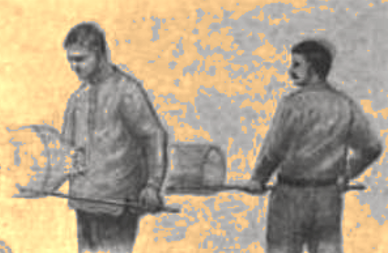Cylinder blown sheet glass on:
[Wikipedia]
[Google]
[Amazon]

 Cylinder blown sheet is a type of hand- blown window
Cylinder blown sheet is a type of hand- blown window Contribution of the glass cladding to the overall structural behaviour of 19th-century iron and glass roofs
/ref> Other methods of producing hand-blown window glass included broad sheet, blown plate, crown glass and

 Cylinder blown sheet is a type of hand- blown window
Cylinder blown sheet is a type of hand- blown window glass
Glass is an amorphous (non-crystalline solid, non-crystalline) solid. Because it is often transparency and translucency, transparent and chemically inert, glass has found widespread practical, technological, and decorative use in window pane ...
. It is created with a similar process to broad sheet, but with the use of larger cylinders. In this manufacturing process glass is blown into a cylindrical shape by a glass blower. The ends of the cylinder are cut off and a cut is made down the side of the cylinder. The cut cylinder is then placed in an oven where the cylinder unrolls into a flat glass sheet. Blenko Glass Company used this method to make flat glass during the 20th century, but it used a process patented by William Blenko that used molds for the cylinder to enable consistency in the size of the glass. In Blenko's case, slight imperfections were desired for the purpose of giving the flat glass the appearance of antique glass.
The standard (non-Blenko) cylinder method caused surface damages on the glass due to the flattening and moving, and the sheet therefore had to be ground and polished. In 1839 the Chance Brothers
Chance Brothers and Company was an English glassworks originally based in Spon Lane, Smethwick, West Midlands (county), West Midlands (formerly in Staffordshire), in England. It was a leading glass manufacturer and a pioneer of British glassma ...
invented the patent plate process where the glass plate was placed on a wet piece of leather and ground and polished to remove all the surface damage./ref> Other methods of producing hand-blown window glass included broad sheet, blown plate, crown glass and
polished plate Polished plate is a type of hand-made glass. It is produced by casting glass onto a table and subsequently grinding and polishing the glass. This was originally done by hand, and then later by machine. It was an expensive process requiring a large c ...
. These methods of manufacture lasted at least until the end of the 19th century. The early 20th century marks the move away from hand-blown to machine manufactured glass such as rolled plate, machine drawn cylinder sheet Machine drawn cylinder sheet was the first mechanical method for "drawing" window glass. Cylinders of glass 40 feet (12 m) high are drawn vertically from a circular tank. The glass is then annealed and cut into 7 to 10 foot (2 to 3 ...
, the Fourcault process
The Fourcault process is a method of manufacturing plate glass. First developed in Belgium by (1862–1919) during the early 1900s, the process was used globally. Fourcault is an example of a "vertical draw" process, in that the glass is drawn a ...
of flat drawn sheet, single and twin ground polished plate and most common, float glass
Float glass is a sheet of glass made by floating molten glass on a bed of molten metal of a low melting point, typically tin, although lead was used for the process in the past. This method gives the sheet uniform thickness and a very flat surfa ...
.
Cylinder blown sheet glass was manufactured in the UK in the mid 19th century. It had been manufactured in France and Germany (and imported to the UK) since the 18th century.
Notes
Footnotes
Citations
References
* {{Glass forming Glass production